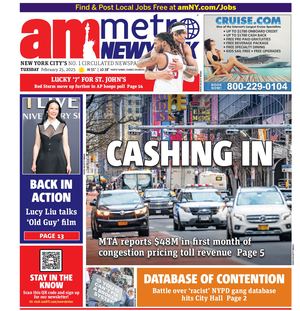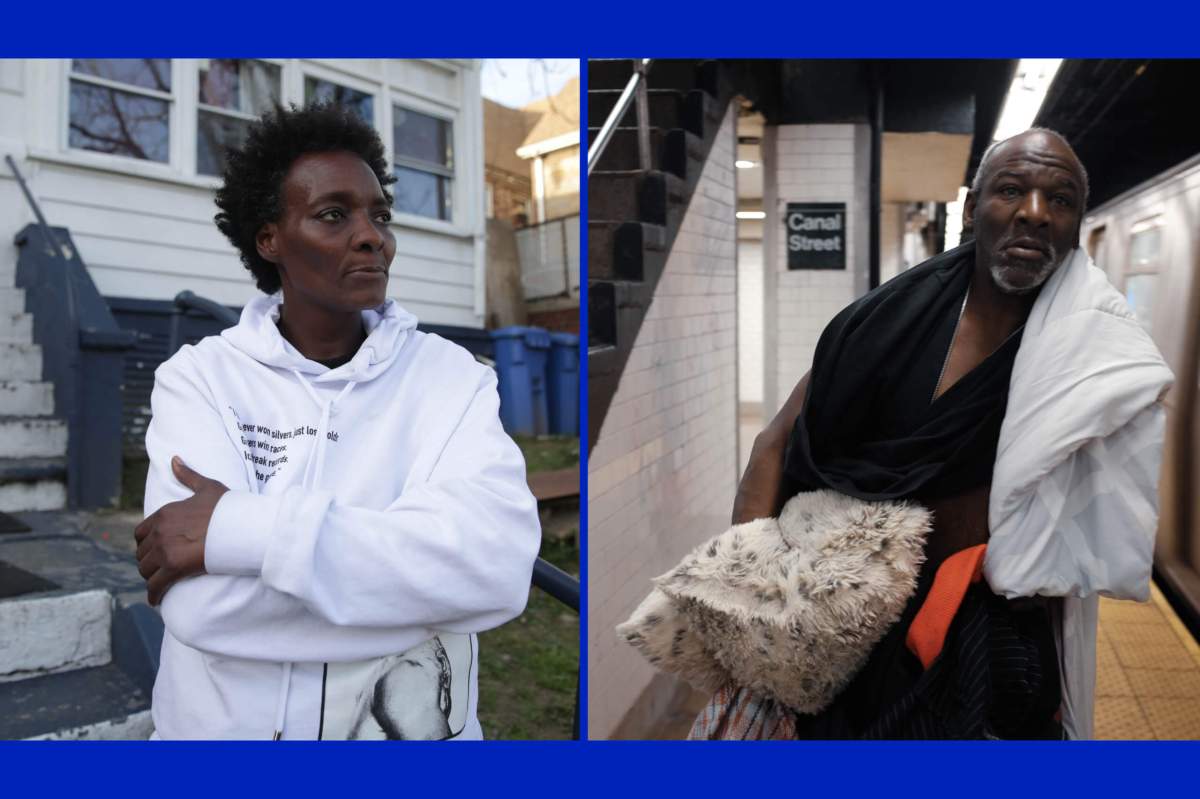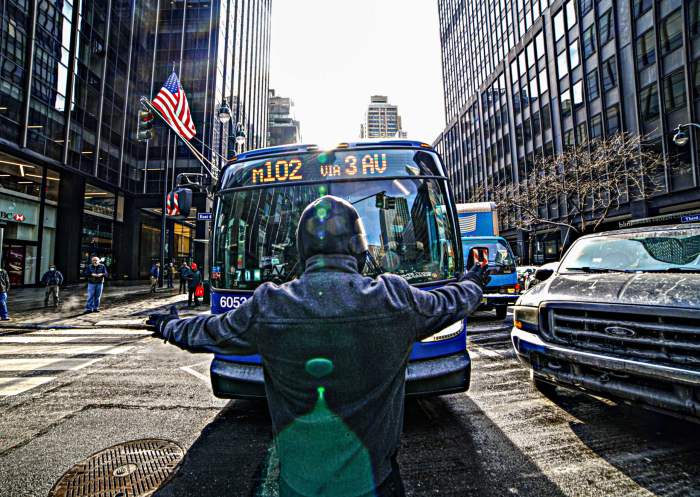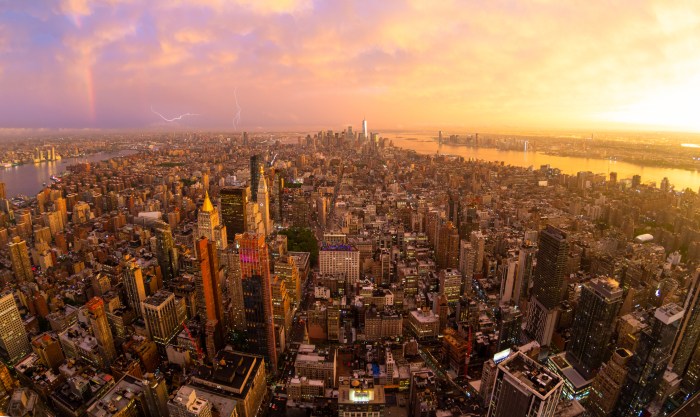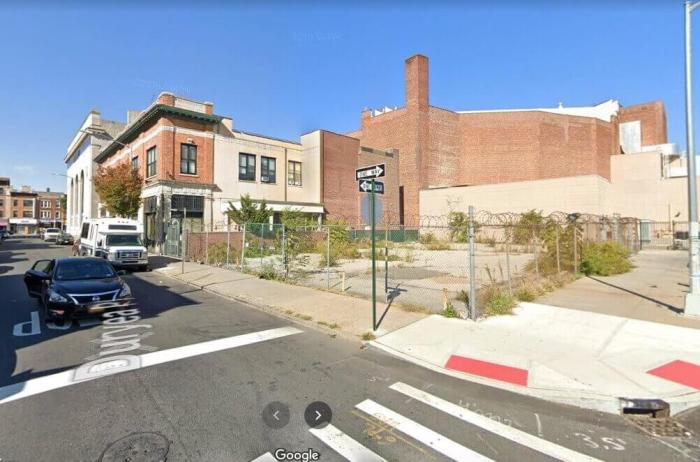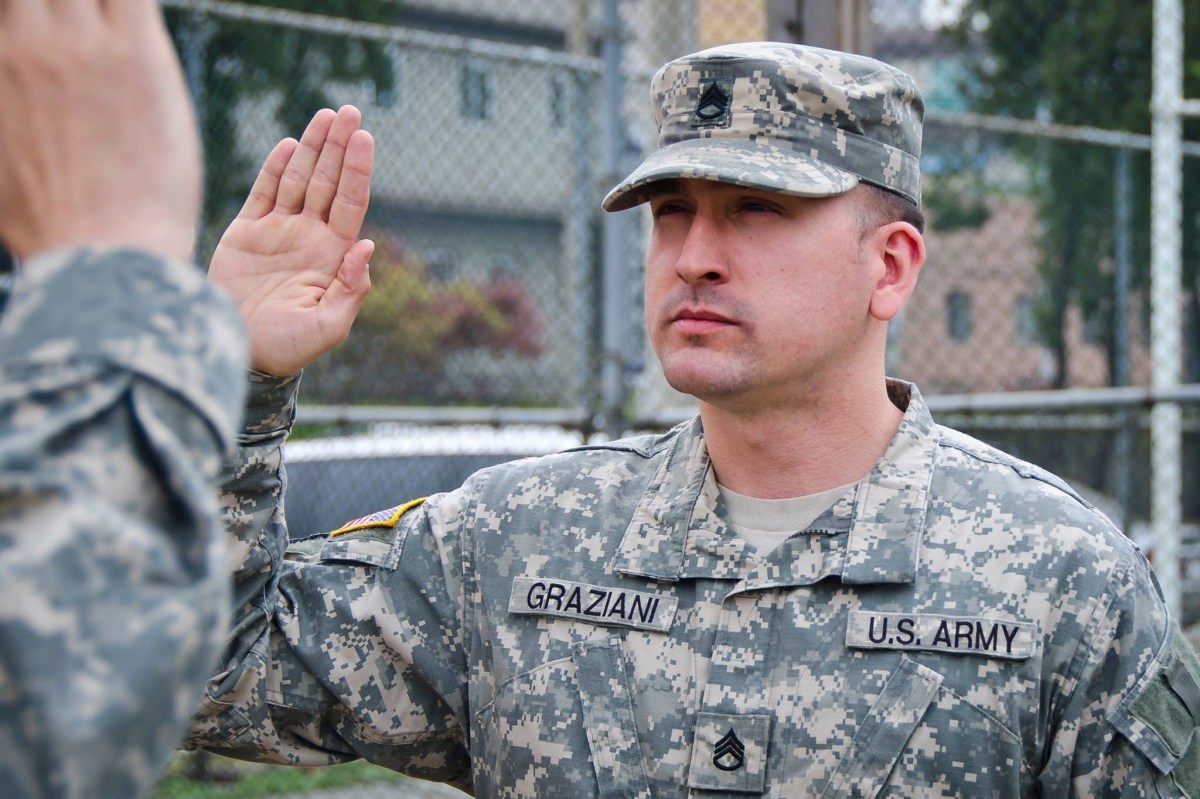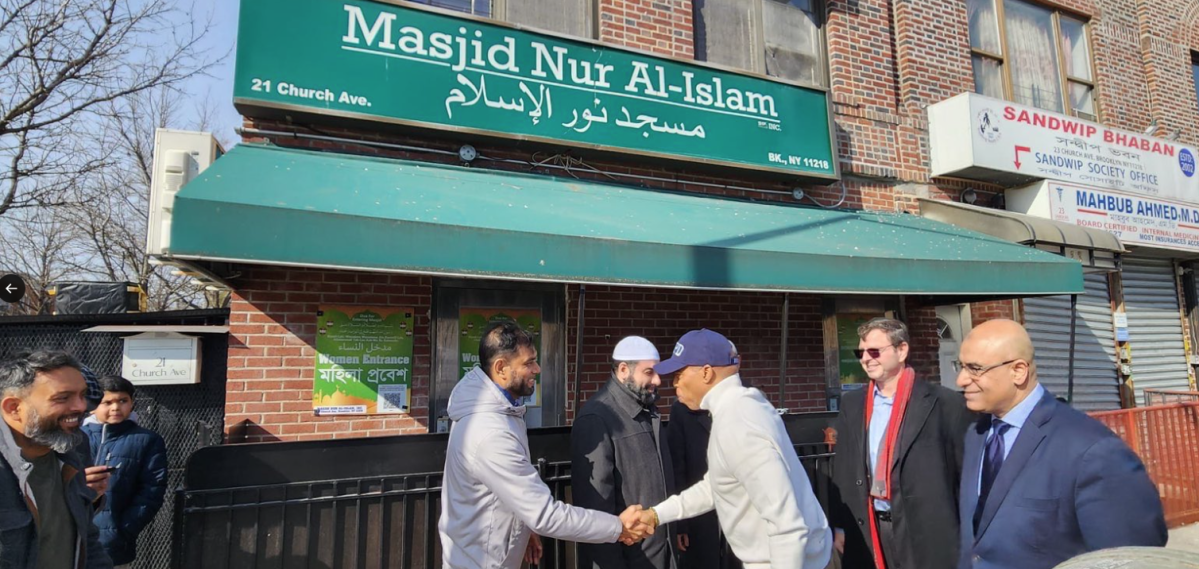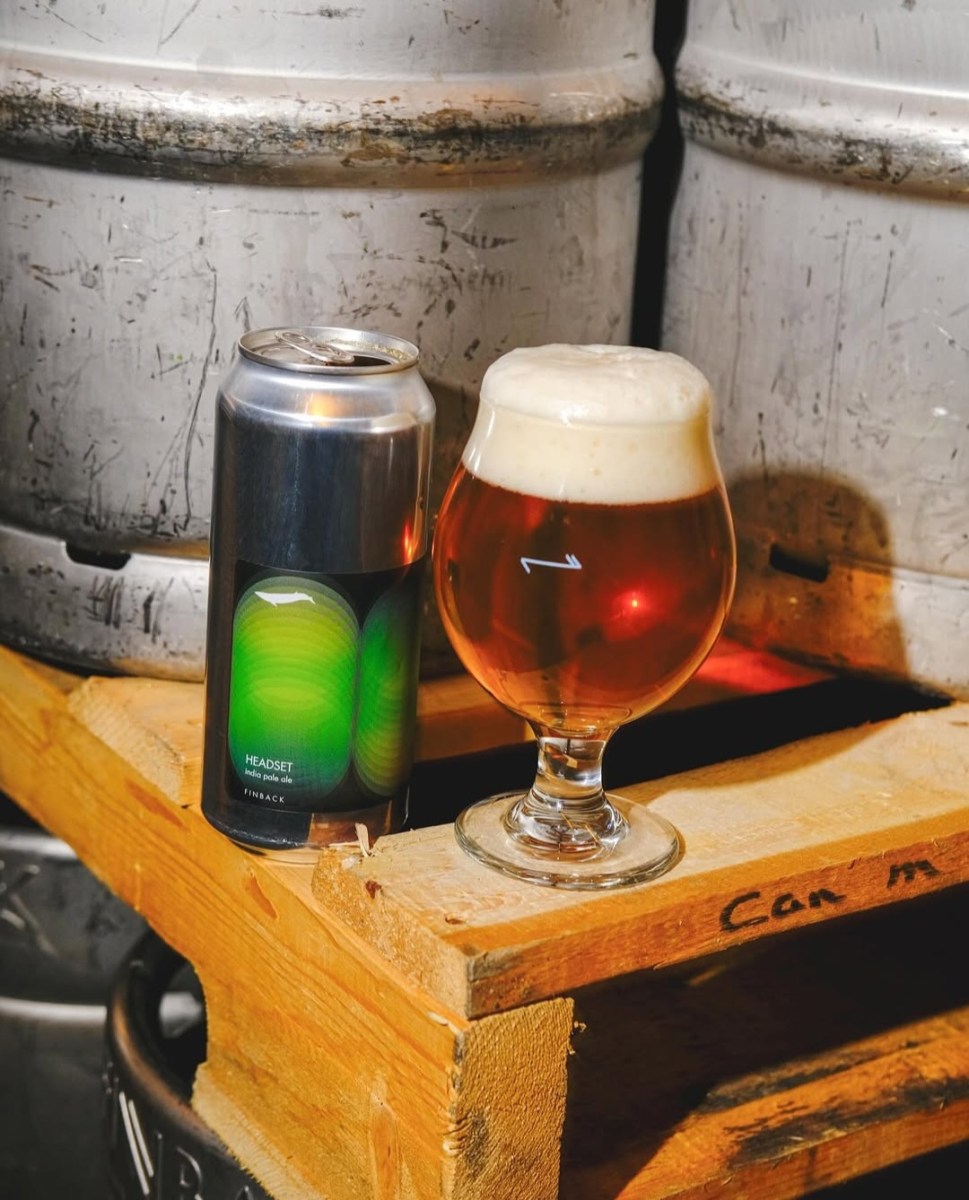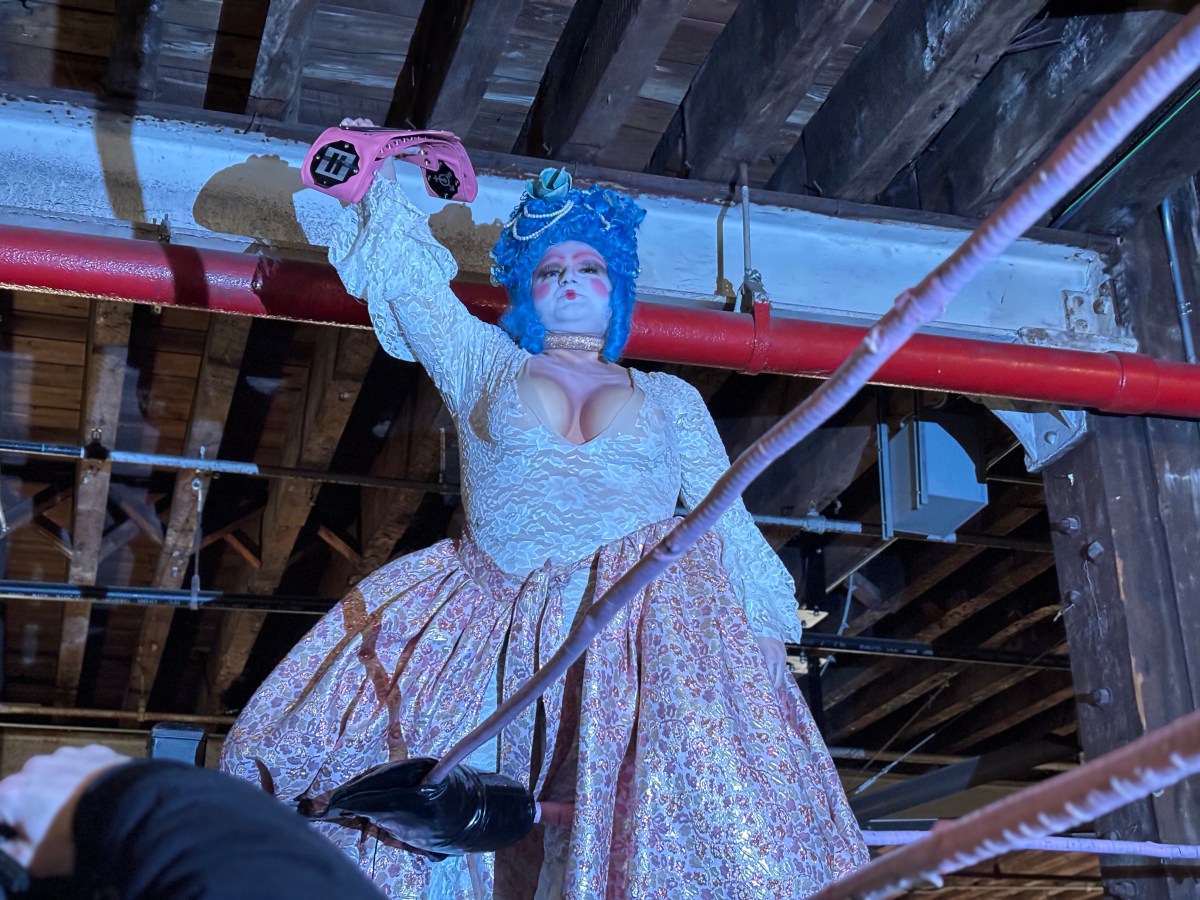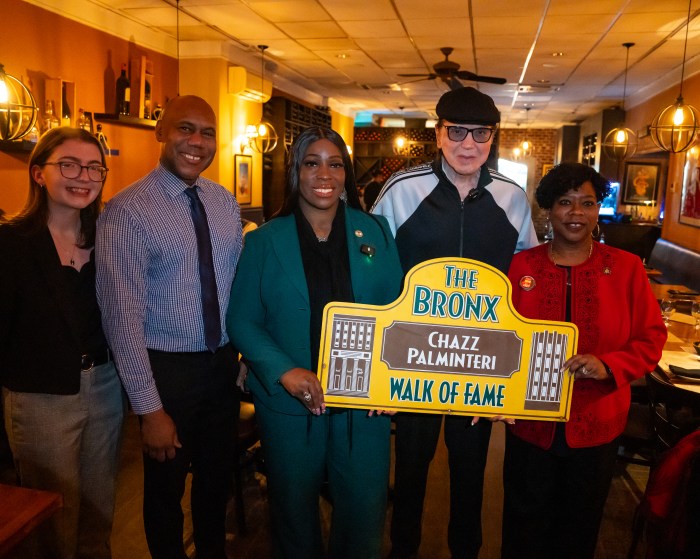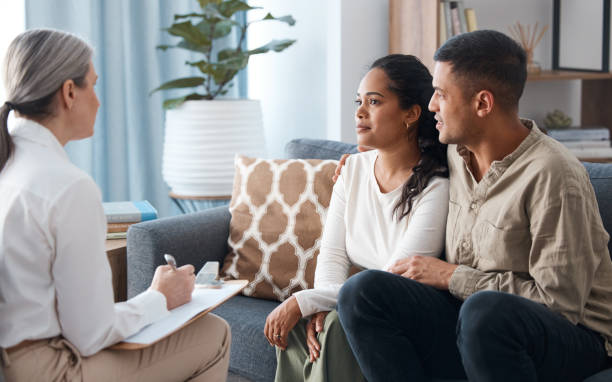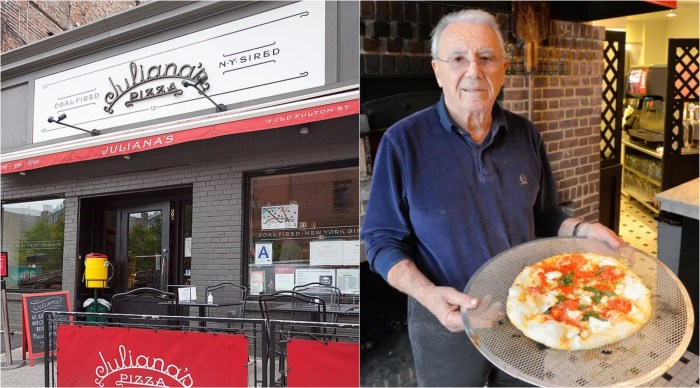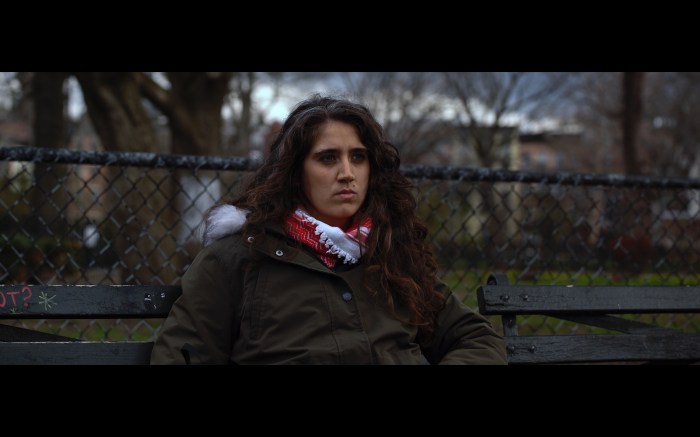When Shakeba Jones, 48, heard Mayor Eric Adams was attacking homelessness on trains, her mind traveled to her daughter and older brother. One rides the trains to get to school, the other for housing.
Homeless activists have disdained the city’s initiative to clear homeless people from public places while concerned citizens, traumatized from high-profile crimes, have cheered the mayor on. Jones sees it both ways.
“You don’t want homeless everywhere, I have a 14-year-old that travels the train system by herself, back and forth from school and I’m worried, it bothers me a lot. These homeless people could be pushing people, stabbing people,” said Jones. “But they do that because there is no help for them.”
On an 8 a.m. express J train barreling toward Manhattan, Jones’ brother Jonathan, 59, slept. Straphangers avoided him. He had fashioned a sleeping bag — a bath mat and a towel for a pillow, a blanket to cover his body.
“In my life I’ve never seen this many homeless people sleeping on the train. What’s really going on?” Jonathan asked. “The world is getting better, they are building beautiful buildings but it seems like just the rich are moving in and they are kicking out the poor. I want people to know I’m scared, I’m homeless.”
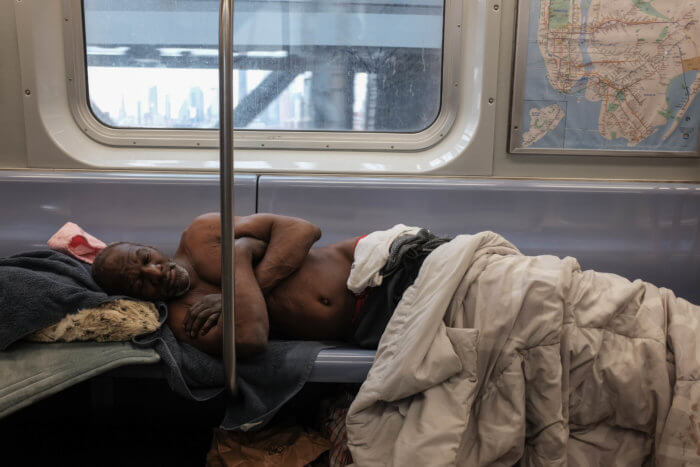
Beginning in February, the city teamed NYPD officers with social workers to parse through subway cars and remove the undomiciled. A surge of violent crime inside train stations prompted the administration to take action.
“I was hoo-harray for that. That was a strong point for [Adams] to come out and say he wants to attack homelessness. And with a special unit of social workers,” said Shakeba Jones. “But I don’t see real help… It’s not just getting people off the train, if you get the people off the train, where are they going, what are you going to do with them? It’s going to be a round and round cycle where you get people out for a moment, then they are back on the streets.”
Spurred by crime
Crime on subways increased 65% compared to last year, according to police data ending April 24. Felony assaults were up 33%. The spike in crime comes as ridership hovers around only 60% from its pre-pandemic capacity.
One Saturday morning in January shook the city to its core. A homeless man had shoved an unsuspecting Upper West Side resident, Michelle Go, 40, to her death inside the Times Square Station.
Critics of Adams’ crackdown on crime pointed out that two cops were standing at the end of the platform when Go was shoved, implying that more cops in subways would not solve the problem. Critics tend to argue the relationship between homelessness and felonies is instead rooted in mental health and social factors.
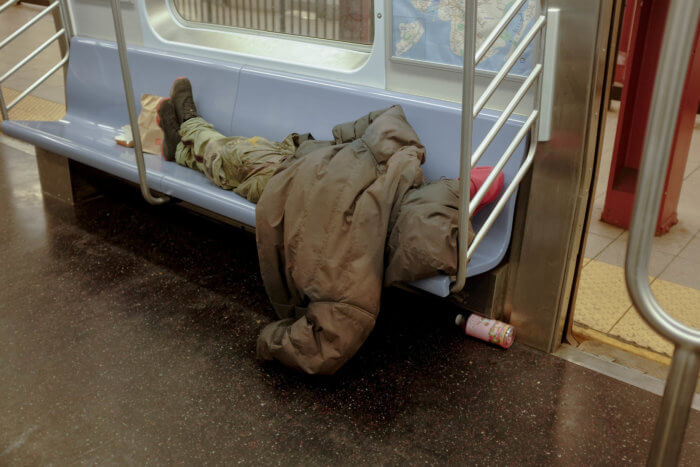
“If you talk to people who are sleeping on the streets, they aren’t there because they want to be, they are there cause they feel that they don’t have better options,” said Jacquelyn Simone, policy director at Coalition for the Homeless. “If you offer people permanent housing… you don’t need to rely on this criminalization and coercive strategy.”
But two years of violence, combined with low ridership and mounting fear, necessitated action on behalf of the Adams administration.
‘They used to call it gladiator school’
In the subway program’s first month, some 650 individuals were removed from trains. 312 of them accepted a bed in a shelter, but numbers can be deceiving.
Jonathan, despite having a bed in an East New York shelter, was riding the train two weeks into the city’s effort. He had been removed by cops in the preceding weeks but returned to the subways. He’d rather take his chance with cops than in a shelter.
“I stay on the train because the shelters are terrible now. There’s a lot of violence in every shelter. People having knives,” said Jonathan. “They used to call it gladiator school.”
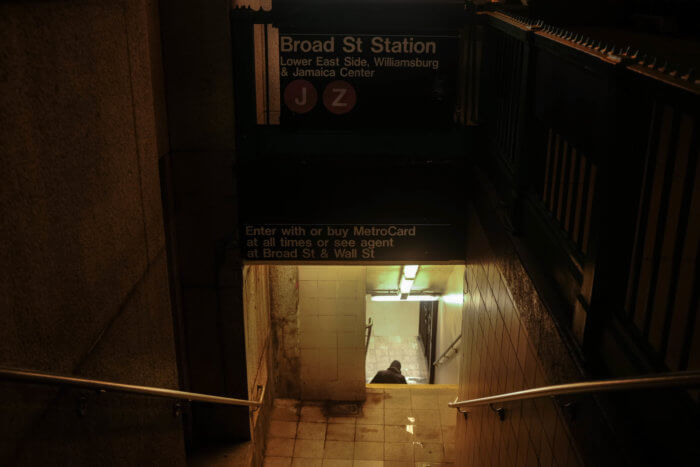
Jonathan isn’t alone. In a similar effort by the city to clear encampments above ground, only five individuals out of 239 encampments accepted shelter placement.
The city was not immediately able to provide numbers for how many homeless people removed from subways stayed in shelters once admitted.
“It really just pushes people from the subway to the streets and from one street corner to another,” said Simone. “So many people say they don’t feel safe in large congregate shelters but they would be more willing to come indoors if it was a smaller place that didn’t have strict rules like curfews and where they didn’t have to deal with roommates or share a dorm with strangers.”
Promise of ‘Safe Haven’
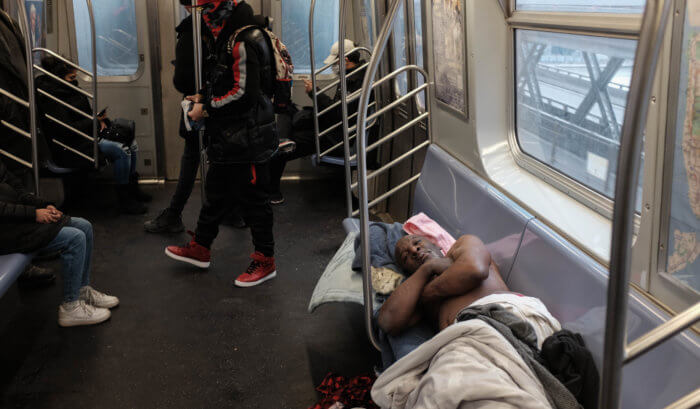
On April 24, the Adams administration announced an initiative to spend $170 million starting in 2023 for unsheltered New Yorkers. The plan aims to bring the city 1,400 low-barrier Safe Haven beds – a middle ground between large congregant shelters and single occupancy apartments.
Safe Haven shelters usually house multiple individuals in a room but not as many as conventional shelters. Some offer medical assistance and mental health resources on site and have low barriers to entry, such as no curfews.
By the numbers, homeless people are more than twice as likely to stay in Safe Haven beds than in conventional shelters. Between May 2020 and January 2022, 63% of individuals admitted into safe have sites stayed, compared to a 24 percent retention rate in regular shelters, according to a report by Coalition for the Homeless.
The mayor aims to build 500 new low-barrier beds by the end of 2022, but the numbers are sticky.
There are currently 2,500 Safe Haven and low-barrier beds in the city, nearly all of them full, according to the same report.
While it’s difficult to calculate the total number of unhoused individuals living outside of shelters, the city’s most recent estimate in January of 2021, counted 1,300 people sleeping in subways and about 1,100 on the streets – far above the number of beds available.
A City Hall spokesperson emphasized that there are beds – not listed in city data – available on an ad-hoc basis, and that the city is never at capacity for low-barrier housing.
“Our partners have low-barrier beds that are constantly available as we adapt,” said the spokesperson. “We want people to be able to come off the streets.”
Jones hasn’t lost faith in her brother and what the city can do for him.
“I have a lot of hope, I have hope that Eric Adams will attack the issue,” she said. “He’s fast acting with the guns which I praise him for, we want the guns off the street in the same way we want the homeless… off the streets.”
But Jonathan has lost faith.
When a cop wakes him up and tells him to get off the train, it drives him farther from recovery.
“I’ve been in jail all my life. They took me to jail one time for sleeping on the trains because a fight broke out,” he said. “It makes me feel like I want to kill myself because who gives them the right to put me off the train… but I guess I wake up everyday lying to myself because I haven’t done it yet.”
Wes Parnell is a reporter at Lost Debate.
